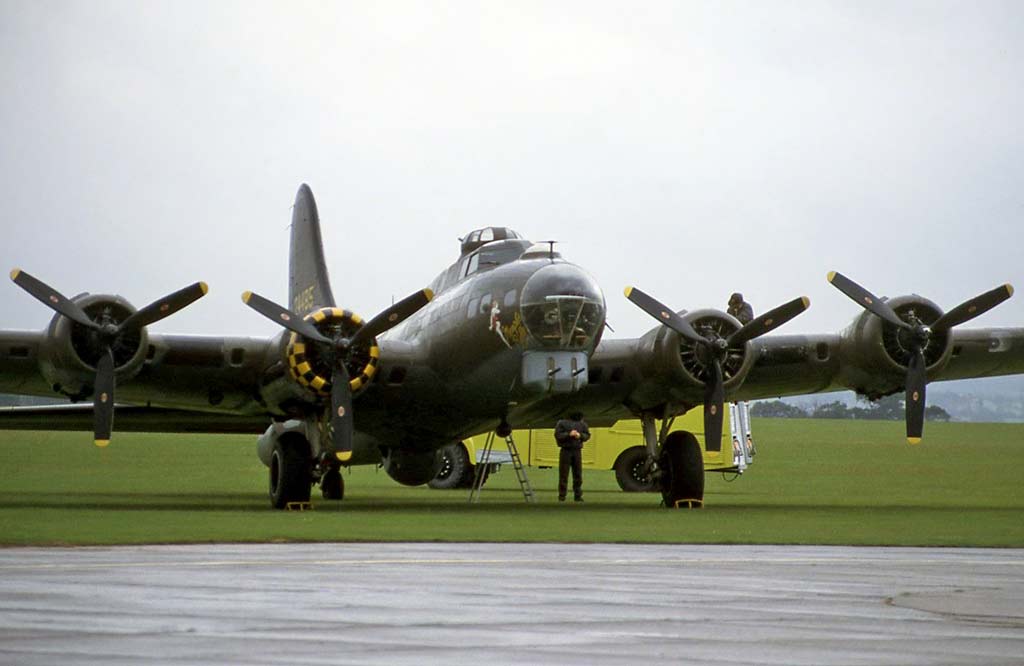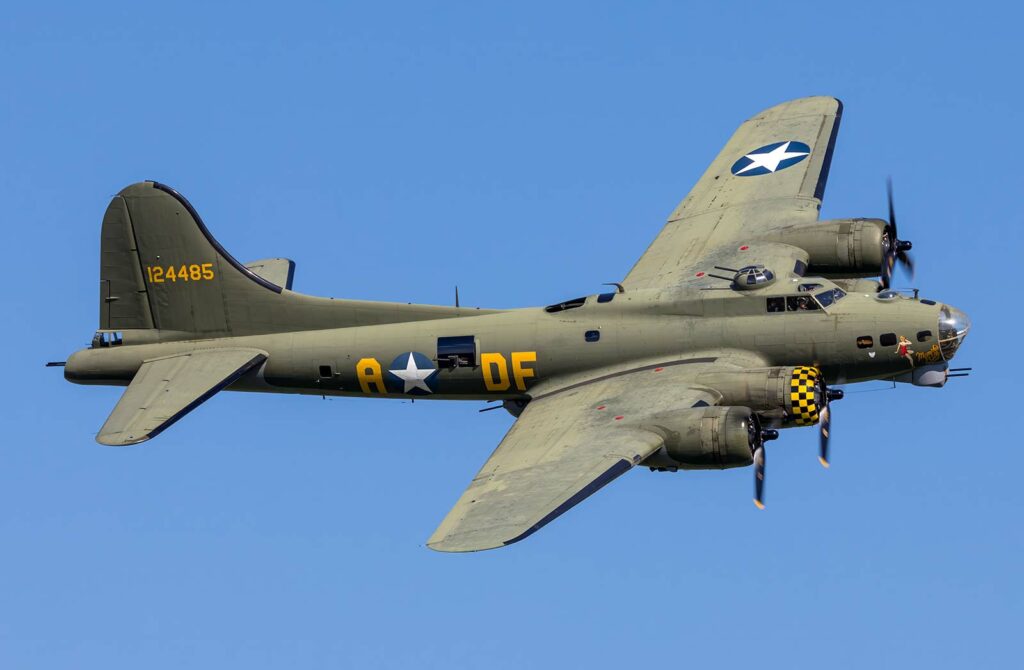The Boeing B-17 Flying Fortress, a WWII-era heavy bomber, renowned for its durability, long range, heavy payload, and extensive defensive armament.
This technical article explores the Boeing B-17 Flying Fortress, a significant heavy bomber of WWII. It covers the historical context and development objectives of the aircraft, detailing its design features, performance capabilities, and military usage. The B-17’s design is examined for its technical specifications, advantages, and limitations. Its performance is analyzed, including engine specifications, speed, altitude, and range, compared to contemporary bombers. The article further discusses its armament, combat roles, operations, and how it fared against enemy aircraft, alongside its post-war service and legacy.
The Boeing B-17 Flying Fortress is one of the most iconic heavy bombers of World War II. Renowned for its robustness and formidable payload, the B-17 played a crucial role in the Allied bombing campaigns across Europe and the Pacific.

History of the Development of the Boeing B-17 Flying Fortress:
In the 1930s, as global tensions rose, the United States Army Air Corps recognized the need for a long-range, heavy bomber capable of defending American shores and projecting power overseas. Boeing responded with the design of the B-17. The development program was initiated by Boeing in collaboration with the U.S. Army Air Corps, aiming to create an aircraft that could carry heavy bomb loads, defend itself against enemy fighters, and operate at long ranges.
The B-17 first flew on July 28, 1935, demonstrating impressive flight characteristics and payload capacity. Its development was timely, as the world was inching closer to another global conflict. The B-17 was designed with the philosophy of daylight precision bombing in mind, a strategy that would dominate the U.S. bombing efforts during the war.
Design of the Boeing B-17 Flying Fortress:
The B-17 was a large aircraft, with a wingspan of approximately 103 feet 9 inches (31.6 meters) and a length of 74 feet 4 inches (22.7 meters). It was one of the first bombers to incorporate a fully cantilevered wing design, allowing for a significant bomb load. The aircraft featured a durable, all-metal construction, which contributed to its legendary survivability.
Powered by four Wright R-1820 Cyclone engines, each producing 1,200 horsepower (895 kW), the B-17 was capable of carrying a bomb load of up to 4,800 pounds (2,177 kilograms). Its defensive armament included multiple machine gun turrets, providing coverage against enemy fighters from almost every angle.
However, the B-17 had limitations. Its heavy structure meant it was less maneuverable than fighters, and it required a large, well-trained crew to operate effectively. Additionally, as the war progressed, the B-17’s vulnerability to advanced enemy fighter aircraft and anti-aircraft fire became increasingly apparent.
Performance of the Boeing B-17 Flying Fortress:
The B-17’s performance was impressive for its time. It had a maximum speed of about 287 mph (462 km/h) and a service ceiling of 35,600 feet (10,850 meters). Its range extended up to 2,000 miles (3,219 kilometers), allowing deep penetration into enemy territory.
When compared with contemporary bombers like the British Lancaster or the American B-24 Liberator, the B-17 was slower but more robust and had a higher service ceiling. Its ability to sustain heavy damage and still return home became legendary.

Military Use and Combat of the Boeing B-17 Flying Fortress:
The B-17’s armament consisted of up to 13 .50 caliber machine guns and a significant bomb load. It saw extensive use in both the European and Pacific Theaters. The aircraft participated in key operations, including the bombing of Berlin and the raids on the German industrial heartland.
The B-17 faced stiff competition from German fighters like the Messerschmitt Bf 109 and the Focke-Wulf Fw 190. Despite its defensive armament, losses were high, especially before the introduction of long-range escort fighters like the P-51 Mustang.
Post-war, the B-17 was phased out in favor of more modern aircraft like the B-29 Superfortress. Some were sold to other countries, but its military use declined rapidly after the war.
The Boeing B-17 Flying Fortress remains a symbol of American industrial might and aerial combat capability during World War II. Its development marked a significant leap in bomber technology, and its operational history underscored the importance of strategic bombing in modern warfare. While it was eventually surpassed by newer technologies, the legacy of the B-17 as a resilient and effective bomber endures in aviation history.
Back to the Bombers section.